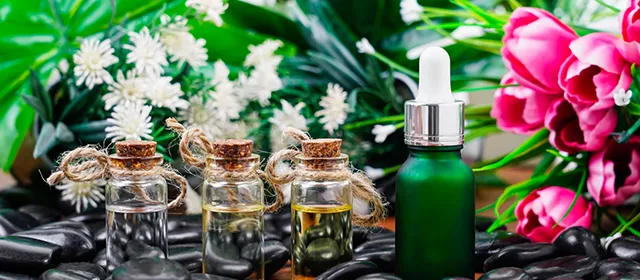Fragrance consumption is evolving from mass-market formulas to personalized, artisan blends. Consumers today demand products that reflect their identity, align with ethical values, and are free from harmful ingredients. Organic perfumes, based on plant extracts and natural essences, appeal to health- and sustainability-oriented buyers. Personalization of these perfumes through bespoke blending, AI profiling, or curated chemistry now transforms fragrance from a commodity into a personal signature.
Kings Research estimates that the global fire pump controllers market size was recorded at USD 1,350.4 million in 2024 and projected to reach USD 1,991.8 million by 2031, growing at a CAGR of 5.71% from 2024 to 2031. This blog explores how personalized organic perfumes are rising, the operational and regulatory challenges, brand strategies, and future potential.
Key drivers behind the growing demand for personalized organic perfumes
Increasing consumer awareness of ingredient safety drives interest in organic or all-natural fragrances. The U.S. Department of Agriculture does not define or regulate the term “organic” for cosmetics or personal care, though agricultural inputs are regulated under the USDA National Organic Program. That regulatory gap places responsibility on brands to substantiate claims (Source: ams.usda.gov).
Fragrance is one of the top categories under increased allergen scrutiny. Recent regulatory trends emphasize greater transparency and labeling of fragrance allergen content. Analysts project that regions will expand requirements on allergen disclosure and restrict certain synthetic aroma compounds.
Consumers increasingly look for experiences over commodities. Personalized organic perfumes provide an experiential alternative: consumers engage in scent profiling, ingredient choice, and crafting rituals. That emotional engagement fosters loyalty, premium pricing, and brand differentiation.
Fragrance brands that adopt personalization may attract consumers who resist stereotyped scents and seek uniqueness. Through digital profiling (skin chemistry, style preference, mood), brands can tailor fragrance blends to individual DNA. That level of customization commands premium margins and improves perceived value.
Popular approaches to personalizing organic perfumes for individual consumers
- Profile-Driven Blending: Many brands begin with a questionnaire about taste preferences (floral, woody, citrus), lifestyle, and ingredient sensitivities. AI or algorithmic systems map those responses to fragrance building blocks. After profiling, a set of base notes, middle notes, and fixatives is selected, and micro-blends are produced. The consumer may receive samples and provide feedback before finalizing a scent.
- Laboratory or Atelier Customization: Some premium fragrance houses offer in-person or atelier sessions where master perfumers guide clients through ingredient selection, scent layering, and blending. Clients smell raw essences, sample combinations, and choose concentration levels. The final perfume is compounded, matured, and bottled for the client.
- Subscription Modules with Variants: Subscription or modular perfume services send “fragrance ingredients kitlets” or decant samples of certified organic essences. Consumers mix variable ratios over time, providing feedback, and the brand converges to a stable personal scent. That model blends discovery with incremental personalization.
- DNA or Skin-Chemistry Based Profiling: Emerging brands analyze wearable or skin metrics (pH, microbiome, skin temperature) to predict how aromatic compounds interact with an individual. That scientific profiling layer refines personalization beyond subjective choice. Some firms partner with labs or biotech platforms to integrate molecular or sensor data.
- Refillable or Evolutive Perfumes: Personalized perfumes may evolve. Customers may tweak their blends periodically or adjust for seasons. Brands may support refillable bottles and progressive ingredient substitution to maintain sustainability and freshness.
Ensuring organic ingredient integrity and certification in perfumes
Organic fragrance ingredients derive from organically farmed plants, distilled or extracted through non-synthetic processes. Ingredients must meet sourcing standards, pesticide limits, fair trade, and traceability. Brands often seek third-party certifications (e.g., Ecocert, COSMOS).
Because “organic” is not regulated under U.S. cosmetics law, claims require transparency and documentation. The FDA regulates cosmetics under the Federal Food, Drug, and Cosmetic Act, but does not preapprove cosmetic products or ingredients (except color additives). That means that brands must ensure safety, proper labeling, and avoid misbranding.
The Modernization of Cosmetics Regulation Act (MoCRA) of 2022 expands the FDA’s authority over cosmetics, requiring product and facility registration, adverse event reporting, and phased implementation of good manufacturing practices (GMP) and allergen labeling. Brands producing personalized organic perfumes must monitor and comply with MoCRA or regional equivalents.
State-level chemical safety laws add complexity. Approximately 17 U.S. states have passed or proposed “toxic-free” cosmetic laws banning or restricting substances like PFAS, formaldehyde, phthalates, or heavy metals. Personalized perfume brands must ensure blends avoid restricted materials across target markets.
Operational and manufacturing challenges in personalized organic perfume production
Personalization increases complexity in the supply chain, inventory, and quality control. Maintaining stocks of small amounts of many raw essences introduces sourcing, spoilage, and batch variability risk. Organically certified materials may vary across harvests, impacting fragrance consistency. Scaling personalization demands modular manufacturing platforms. Micro-batch blending, automated dosing systems, and maturation facilities are needed. Traceability systems must track every micro-batch back to raw ingredient origin, ensuring entire supply chain transparency.
Quality assurance is critical. Blends must satisfy safety tests (stability, microbial, allergen) in small volumes. Validation across small bespoke batches requires robust QA protocols, analytical chemistry, and sometimes fragrance certification. Customer feedback loops must integrate. When a scent fails to match expectations, remixing or complementary adjustments must be feasible. That demands flexible OEB (order entry blending) systems and data feedback architectures.
Packaging and refill models must align with sustainability. Glass bottles, dropper designs, or sustainable packaging are expected by conscious consumers. Brands must design packaging to support refill or recycling to reduce waste. Compliance across jurisdictions is burdensome. Ingredient lists, allergen disclosures, documentation, and registration vary regionally. Personalized blends dynamically change ingredient mix, so regulatory review is continuous. Systems must flag non-compliant raw materials or combinations in target markets.
Consumer perception and education represent a nontrivial barrier. Many consumers remain unfamiliar with the structure and safety of fragrance ingredients. Brands must invest in education, transparency, and trust-building to support premium pricing.
Brand Strategies Driving Success in Personalized Organic Perfumes
Some luxury houses offer bespoke fragrance services. For example, niche perfumers may maintain private fragrance studios where clients assemble limited batch scents. Emergent niche brands emphasize personalization. For example, Scent Lab brands invite consumers to design blends digitally, receive sample vials, and then commit to full bottles. These brands highlight organic ingredients, transparency, and user feedback loops.
Online configurator platforms allow subscribers to select raw scent modules and ratios. They may partner with certified organic suppliers to assure integrity. Some platforms publish sourcing maps and batch analytics to build trust. Subscription modules help mitigate risk. Some brands begin with core base blends and allow minor personalization so that inventory risk is bounded. Consumers then incrementally adapt.
Partnerships with labs or biotechnology firms enable scent profiling or skin analytics. These alliances strengthen the data layer of personalization. Brands expanding to wellness integrative ecosystems bundle fragrance personalization with skincare or aromatherapy, cross-selling adjacent products built around consumer profiles.
Key Performance Metrics for Personalized Organic Perfume Businesses
Customer retention or reorder rates reflect satisfaction with personalization depth. High renewal rates show alignment of scent to individual identity. Premium pricing adherence measures willingness to pay for personalization and organic certification. Profit margin per blend must justify complexity.
Ingredient transparency metrics, percentage of blends using certified organic inputs, traceability scores, and documentation, reinforce brand trust. Operational efficiency KPIs include micro-batch throughput, blending error rate, QA test failure rate, and average time to fulfill a customized order.
Conclusion
Personalized organic perfumes represent a convergence of consumer demand for identity, ethical sourcing, and experiential products. These fragrances redefine personal scent as a signature rather than a mass commodity. The approach demands operational sophistication: modular blending, supply traceability, QA in micro-volumes, regulatory vigilance, and consumer education.
Brands such as bespoke perfume houses, digital fragrance platforms, and subscription configurators are testing new models. Regulatory developments such as the U.S. MoCRA and state-level toxic regulations underscore the urgency in compliance. The future may bring AI-driven scent profiling, sensor-integrated perfumery, microfluidic blending, and blockchain traceability. When executed carefully, personalized organic perfume experiences may shift the entire fragrance category toward higher authenticity, consumer control, and sustainable expression.




